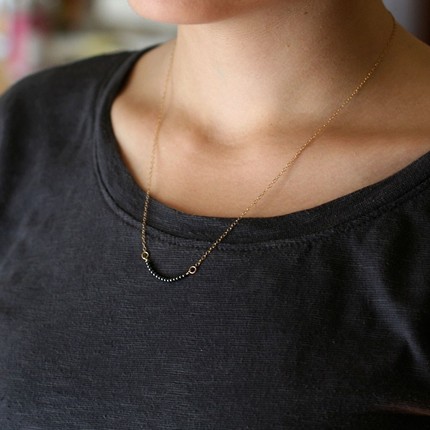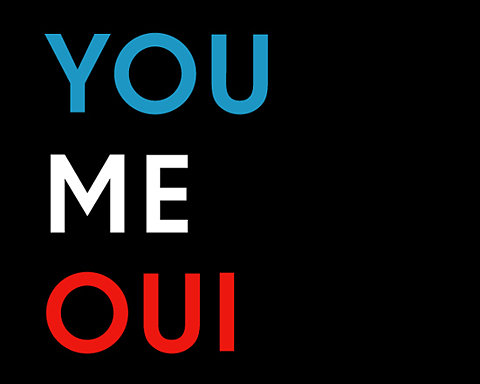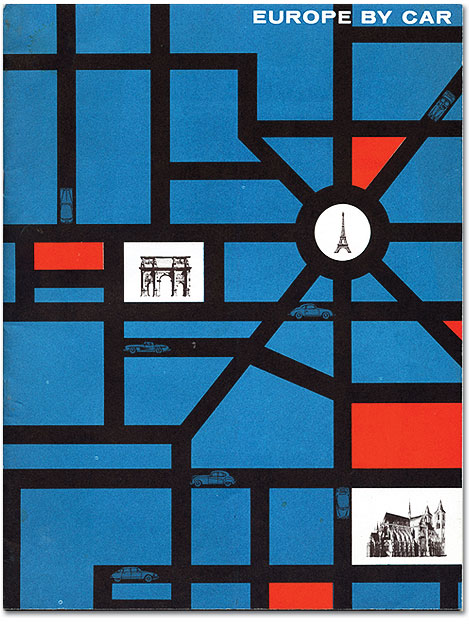

I’m really adoring these delicate beauties. Aren’t they perfect for your every day?
$34, Tabula Rosa and $32 Amelia at Elephantine.
My goal is to help you find meaningful work, enjoy the heck out of it, and earn more money.


I’m really adoring these delicate beauties. Aren’t they perfect for your every day?
$34, Tabula Rosa and $32 Amelia at Elephantine.
Cute little inspiration on how to push your ideas.
via BOOOOOOOM!

Please, I need this dress. And Spring. From H&M’s new Garden Collection to be released this Spring. Priced at a mere $20.
via Oh Joy!

Valentine’s Day is coming up! I’ve got some more cutesy posts coming up this week because I’ve personally never had a problem with a day celebrating love.
via Le Love.

This kind of reminds me of my mother’s favorite movie, Two for the Road with Audrey Hepburn and Albert Finney. Lovely, non?
via Grain Edit.
There are exceptions, okay. But very few bloggers can actually write. Bloggers pander to a crowd trying to satisfy the hive mind. Blogging is entertainment. Many bloggers are good at marketing, building community, relationships, and especially aggrandizing self-promotion, but not writing.
Crowdsourcing is a bloggers’ anthem. I remember my first blog. I deleted it. The posts didn’t get commented on and weren’t passed around. That wasn’t the point. But for bloggers, that is their mission; to create 500-word packages, bold-faced and headlined, read and digested in two minutes or less, bursting with lackadaisical opinion and junk epithets.
“Blogging is not writing,” the author of You Are Not a Gadget Jaron Lanier agrees. “It’s easy to be loved as a blogger. All you have to do is play to the crowd. Or flame the crowd to get attention. Nothing is wrong with either of those activities. What I think of as real writing, however, writing meant to last, is something else. It involves articulating a perspective that is not just reactive to yesterday’s moves in a conversation.”
Blogging is in its essence, not about originality, but about the aggregation, recycling and digesting of ideas. It is the darling of the open culture ideology of the web, where mediocre collaborations have produced a destructive new social contract, reports the New York Times.
“The basic idea of this contract,” Lanier argues, “is that authors, journalists, musicians and artists are encouraged to treat the fruits of their intellects and imaginations as fragments to be given without pay to the hive mind. Reciprocity takes the form of self-promotion. Culture is to become precisely nothing but advertising.”
We posit ourselves into believing that we’re taking down the establishment, but we’re only contributing to the dull masses, eager for mega numbers of comments, subscribers, fans and followers, and other easily influenced analytics. In an age where anyone can be famous with the push of “Publish,” we have lost the creation of enduring legacies that enthuse, provoke and delight.
Bloggers are not writers, nor are they press, or superior to old media. Where disintermediation in the media shines, where a cadre of reporters has eliminated the need for a specific background (say, a degree in journalism or the need to pay dues at the right newspapers), is not evidence of bloggers taking over the world, but rather that the term blogger is now so broad that its definition no longer suits the myriad stacks of people and posts underneath.
Take a journalist for the Wall Street Journal, a reporter for the Huffington Post, a novelist, a Mashable blogger and a Gen Yer typing about their quarter-life crisis. They are not the same, nor equal, and certainly not held to the same standards or expectations. They are, despite the fact that we’d like to give little credence to the notion, entirely different.
“It’s as if culture froze just before it became digitally open, and all we can do now is mine the past like salvagers picking over a garbage dump,” Lanier writes. “Creative people — the new peasants — come to resemble animals converging on shrinking oases of old media in a depleted desert.”
Blogging is entertainment. Maybe it didn’t use to be. Maybe when bloggers were first getting started, it was about thought and connection. But increasingly, it bows to the “appeal of a new online collectivism that is nothing less than a resurgence of the idea that the collective is all-wise.”
Writing is something more. And it is in the reading of such writing that enduring ideas, observations and philosophies satiate what we spend hours a day trying to glean from skimming any number of blog posts.
There is nothing wrong with blogging. But let’s give credit where it’s due – to the true writers, journalists, novelists, reporters, columnists, and others who inspire us to boil their ideas down in an effort to hold onto them just a little longer.
Quick, which is more difficult – work or life?
Up until a year ago, both competed for my attention, each piling weight onto the seesaw to rise towards the favored position. A year ago, however, I started working at Alice and Ryan and I started hitting our stride (both of which were not without challenges, however… many, many challenges).
While working for a start-up demands hours, it demands more in mental energy, in spikes of time about as predictable as a bingo game, where the only invariable is that you know work will be stop and go. This means it’s often difficult to separate work and life, especially in the statuesque pursuit of balance, but while I used to recognize and promote blur, I’m now mindful of the distinct delineation between the two.
Smart people don’t balance two sides of the same coin – your work and life are, after all, inseparable from the backbone of your binding. You can’t push one to one side and one to the other and hope equilibrium presents itself because the entities are glued to each other and to you.
What I mean, for example, is that I cannot see Ryan and refrain from discussing at length our work. I have long agreed that behind every good man is a good woman, and likewise, the same holds true for Ryan and I on both sides. While he is the one that shows up to Brazen headquarters each day, my ideas fill his head. While I’m the one who walks into Alice each morning, Ryan’s sense and advice follows me.
More to the point, I guess, is that there is a mutual respect for what we choose to do with the majority of our day and into the night, and sometimes into our sleep and into dreams. Although when we do relate to each other our dreams from the night before, it’s not very likely to include the mention of a spreadsheet.
Right now, Ryan is across the street from me working. His offices are located diagonal from my condo, but I have yet to see him this week except for when he dropped me off from our weekend in Philly together on Sunday. I was working on a Wall Street Journal exclusive early this week, and he’s working on big plans for Brazen later this week. We also have friends, family, a basketball league, dance classes, books, blogs, grocery shopping, the gym, bill-paying and other magnitudes and minutiae of daily life competing for our attention.
Oh, and the new season of Chuck just started.
When I walk into work, much of that has to go away. I imagine this is natural for most people who enjoy their jobs, but particularly at start-ups you have to be ready to do whatever is put in front of you that day. Everything planned for the day will get eaten up by new priorities, larger plans and whether or not the toucan (our CEO) monopolizes all the time with the dolphin (our President and my direct boss). This can be best described as acting as a pivot, keeping your center, but spinning to each new person and project that appears.
One of the best parts of working at a start-up is that an idea spun in the morning has the potential to be fully realized by the afternoon. It can be that quick and magical and exhilarating. Also, the customers. When I worked for a non-profit in a trailer across from the food pantry that I was raising money for, I thought I wouldn’t again experience the rewards of being in such direct contact with the people I helped. But Alice has that.
One of the more challenging things is that blurring my work and my blog and my life to such an extent can make me very unhappy. Sometimes I feel like I’m always working which is frustrating, so I’ve tried to have clearer boundaries. I don’t really believe in work/life balance as an ideal, but no longer do I trust in work/life blur so much either.
As a generation, we’re always on. Is it okay to tweet during your workday? How often? What about talk to your significant other? Send personal emails? Do you work with your partner at night? Accept calls from the boss? Check your iPhone during a movie? Where is the line drawn and what is acceptable?
For Ryan and I, we have chosen to spend the majority of our day, not with each other, but with two different start-up companies. Our lives and relationship are more difficult and more enriched because of it. What about you? Work/life balance: truth or myth? Does it stand a chance?
Florida at Christmastime isn’t particularly warm, but it’s near tropical for Wisconsinites (of which I am finally one), so it is not the light breeze that causes my arms to hover close to my core while sitting at the pool. In fact, it is something that exists entirely in my head, and I have to consciously and decidedly lift my elbows and hands away from my hips and stomach towards the armrests so as to appear confident.
The right to be a woman, in the finest sense, relies on such confidence.
My two-piece bathing suit beguiles a certain flirtatious composure (it’s got polka dots), and at 5’8” (okay, 5’7” and a half) and 130 lbs, I wear it well. According to my original Illinois driver’s license, that identifying information hasn’t changed for ten years. I still weigh the same as I did in high school, but there isn’t a day that goes by that I don’t think I feel fat.
When I look at pictures of myself, I can see rationally that I am skinny, that I look skinny. That I am healthy, and I look healthy. That I am beautiful, and I look beautiful. Rationally, these are all facts that can be written and entered into evidence.
Quite irrationally, I can tell you that the daily struggle of being a woman is that my stomach expands when I eat, my thighs are big and my hips are large. I also worry about the backs of my arms, the portion of my leg directly underneath my butt, and the meeting place of my neck to the space underneath my chin.
Necessary qualifiers: I have an active lifestyle, I love to cook, I love to eat, I don’t read so-called women’s magazines and I usually love my biggest “flaws” – my thin lips, pale skin, imperfect nose and uneven eyebrows, thin fingernails, fine hair, big feet, small breasts, large rear. I’ve been known to run errands without make-up.
But I am looking in the mirror more often lately. Ryan says this to me, over Christmas vacation, while we sit in a high-rise condo that has a mirror on every wall and round every corner. There are a lot of mirrors here, I reply, but I know what he is talking about. He is worried about me, he says.
I don’t wonder at air-brushed models but the pre-teen girl walking down the street in West Palm Beach, dressed with too many inches exposed on her sapling thighs. Or the girls at the Philly wedding whose legs are the size of my arms and whose arms are the size of my wrists. Is this sickness? Disease? Good genes?
A couple mornings later, I spend too much time getting dressed considering I work for a start-up with a casual dress code. I dress up because I like to. I try not to stand out too much from my colleagues who wear jeans and sweatshirts by wearing a cotton t-shirt fabric scarf, or nice boots over leggings. I wear a lot of casual dresses with tights. I try to match the VPs (all men), but since there are no women executives, it’s difficult to know if I’ve got it right.
I could go on.
And then, on any given day, I read about why there are fewer women CEOs, that women are better CEOs, that women are less promising as candidates for promotion, that surgeons can now relocate fat from your thigh to your chest, that kids see housework as a women’s domain, just 4% of venture capital goes to women, wives earn more than their husbands, and just being a woman is a pre-existing condition in healthcare.
I find the truth somewhere, not in the piling up of research, like clothes discarded on my floor, but in accounts from real-life women, between the lines in their interviews, bluntly stated in their ethos, and shared and protected among friends.
“The truth is,” Joanne Lipman says, a former deputy managing editor at The Wall Street Journal and founding editor in chief of Condé Nast Portfolio magazine, “women haven’t come nearly as far as we would have predicted 25 years ago. Somewhere along the line, especially in recent years, progress for women has stalled. And attitudes have taken a giant leap backward.”